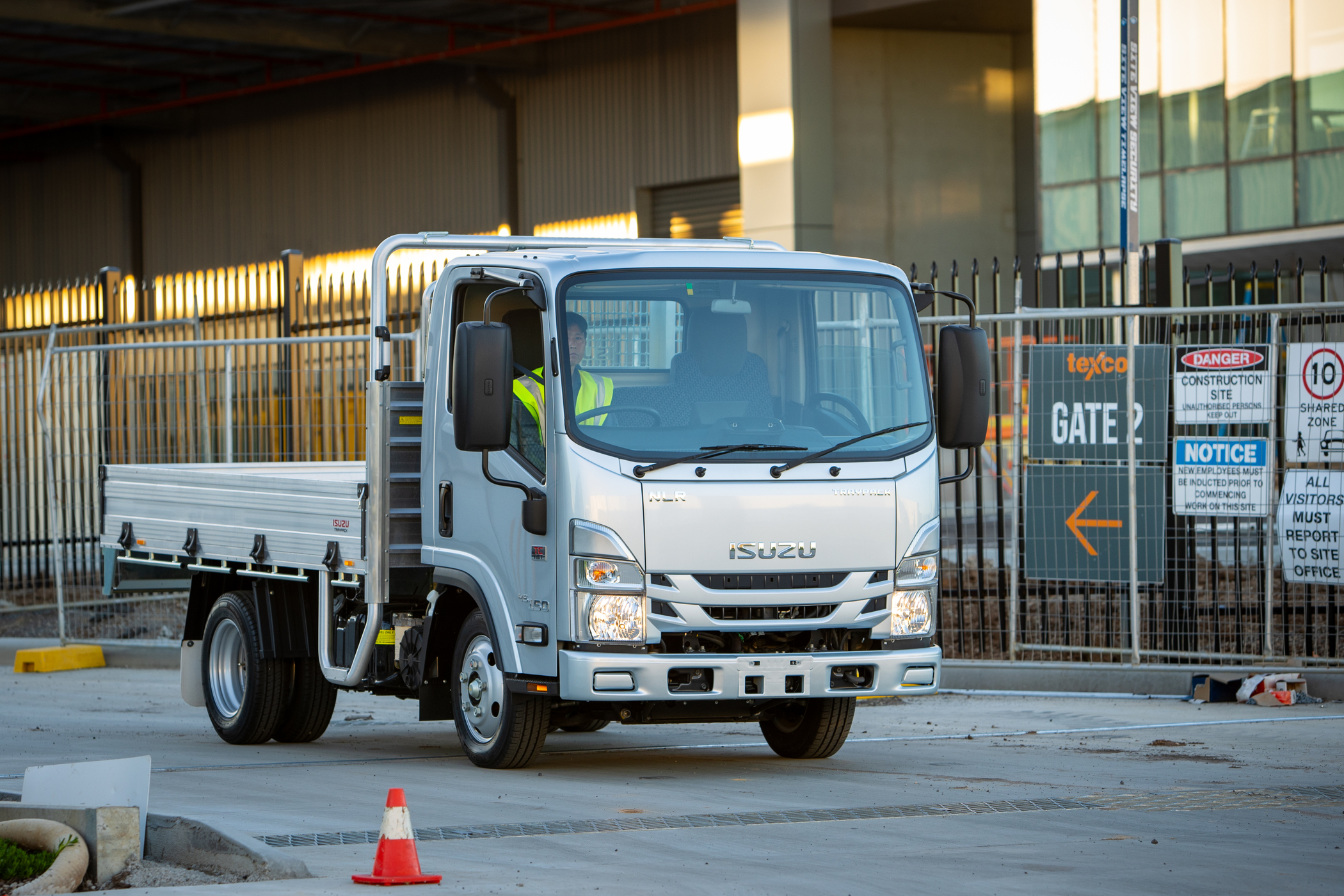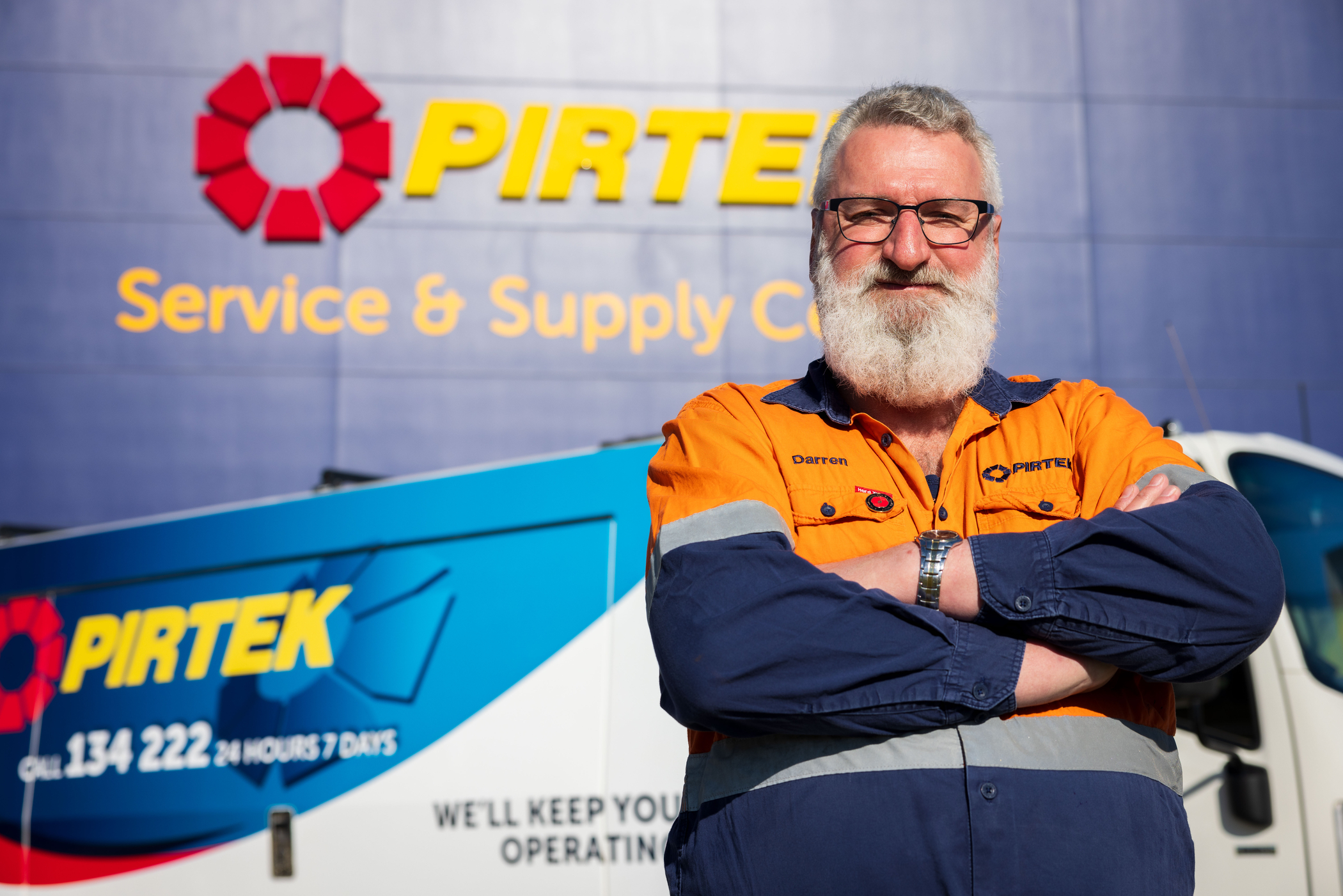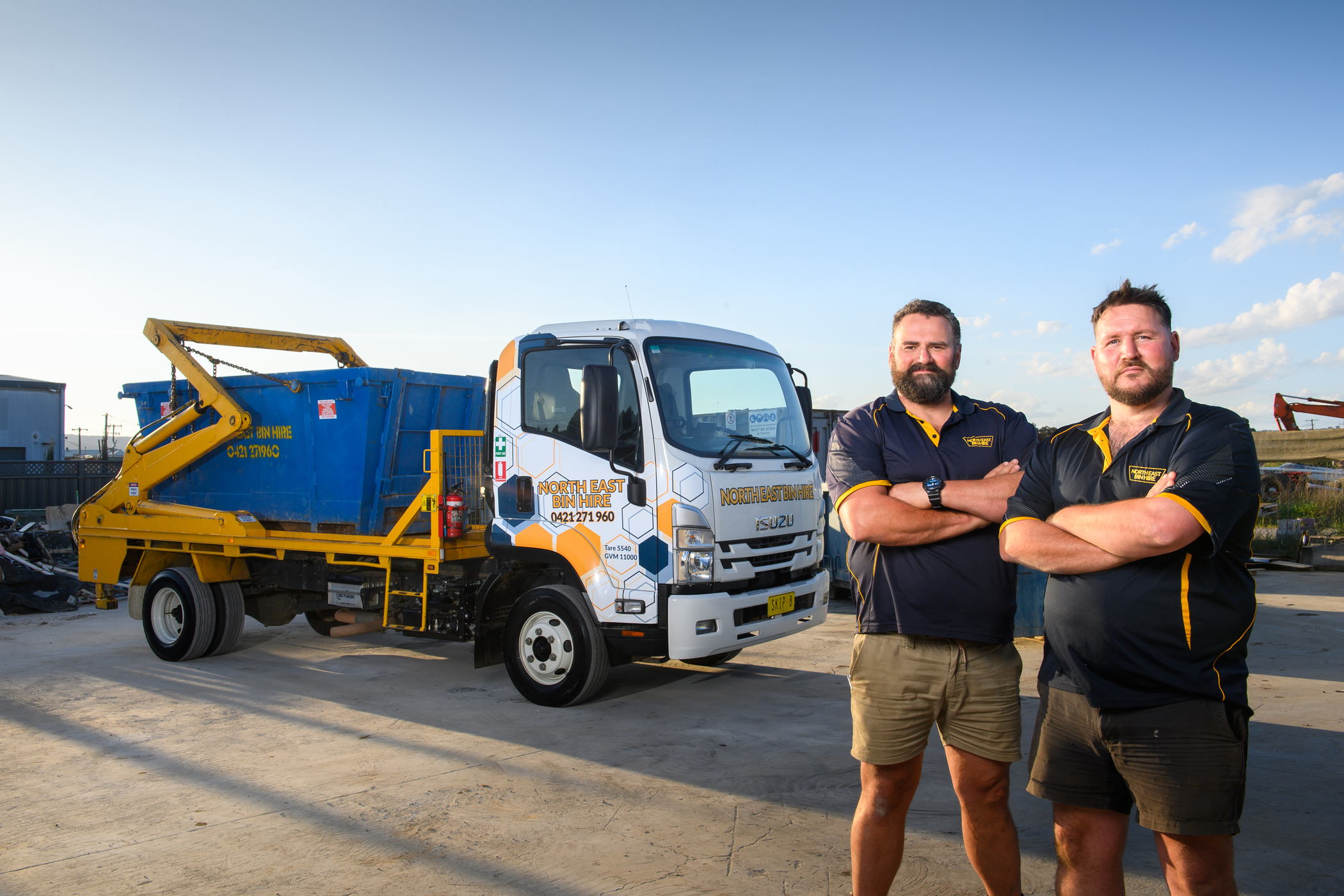WORKER ANTS
Dec 21, 2015
•
0min read
Bruce Honeywill
Truckin' Life
December 2015
Isuzu owns the Australian market in the light and medium truck sectors and has done for a quarter of a century. With the launch this year of the N Series, Isuzu is crystal-balling a revolution in ‘last mile’ freight deliver y.
The transport industry is in an age of revolution.
Urban populations double, the sprawl of major cities is relentless. Traffic congestion clogs the arteries as cities seem to be rushing headlong towards a major heart attack.
Alternate methods of getting freight to where it is needed are being sought the world over. Global giant Amazon plans to deliver parcels to your doorstep by helicopter drones. Is this where we are heading? Suburban streets with dragonflies of delivery drones buzzing above us? Move over Jetsons, the future is nigh!
Recently Isuzu held a press conference in Melbourne. When someone like Phil Taylor, an Isuzu Australia director and company Chief Operations Officer speaks, you sort of need to stay awake and listen. He has piloted Isuzu’s 26 year market leadership in truck sales in this country and invests in future predictions at the corporate level in what he sees as a challenging time. Which way is freight distribution going to go?
Taylor’s talk was full of reference to the ‘Uberfication’ of freight delivery, using the Uber taxi model of constant contact with trucks and delivery times through techno-apps just as Uber uses in its current global taxi construct.
The Isuzu vision boils down to major freight hubs being fed by high productivity, often multiple combination - rigs and rail on main inter-capital corridors. Distribution from these hubs could well be conducted by the worker ants of smaller freight platforms. With each iteration these are becoming cleaner and more economical in the tonne delivered sense.
Now there’s nothing new about the freight hub concept. It’s been around for decades with several false starts and part successes. Listening to Phil Taylor and putting the present into context with the future, it is not hard to believe that we are entering a new era. By the 2020s the distribution task will be very different from today.
Phil’s continual references to the Uber model were particularly interesting considering the other side of the Uber coin. This tech start-up is working towards autonomous (driverless) taxis and people moving in the next decade. Why else is Uber so generous in paying fines for the Mum and Dad business structure of the current Uber model? Futurists say Uber is setting up the internet-based structure for autonomous vehicles.
When pushed on these developments, Taylor would not rule out that Isuzu was already well down the autonomous development path, “as most truck manufacturers are,” he said.
So listening to Phil Taylor, reading between the lines and adding a little crystal ball, freight distribution in 2025 could be a mix of heavy multiple combination vehicles feeding into hubs on dedicated roads. Rather than provincial hubs, these freight centres could be on the outskirts of cities. Computerised freight unit delivery will be geared into hubs within geographic spans.
From the hubs, the worker ants spread out to make their deliveries, all controlled by telematics, all maintaining road speeds to match urban traffic flow. Customers will look at an app on a smartphone and see where their parcel is, in real time and geography, with a delivery ETA. Above the trucks and cars, the drones of Amazon and other companies yet to emerge are flying express deliveries overhead.
All sound a little sci-fi? ALL this technology is available now. And the worker ants? They were what we were about to drive on a cold, grey, late winter’s day in Melbourne. Enter the new N Series from Isuzu.
N Series
The N Series has a wide range of drive away, ready to work vehicles, many of these models meet the booming market of commercials able to be driven on a car license.
Marketing Manager Geoff Birdseye says improved safety, increased power and torque, a new branding system by numbers and a new look, complete the package.
The trucks embrace the ongoing evolution of technology and ‘intelligent.’ This intelligence feeds into the sophisticated telematics system that comes with this range of Isuzu trucks.
So, under low flying clouds at the Westar Truck Centre, we climbed into the little trucks and set off for a drive into… the future?
I drove the NPR 75-190 first. It was set up as a curtain sider delivery wagon with a GVM of 7.5 tonnes. It is powered by the 140 kW Isuzu engine. Driving all the trucks gave a familiar experience.
Much design work has been done on the stepping up and down into the trucks and the cab design is ample for a big fella. The telematics screen is easily readable and comes with many options from basic for a truck used as a single operator product delivery truck to extraordinarily sophisticated for trucks in a fleet operation where delivery ETAs and driver efficiency can be monitored by management.
After weaving a simulated suburban delivery pattern through suburban Melbourne, the next challenge was driving the NPR 45-155. This was a smaller jigger with a GVM of 4.5 tonnes.
This range of trucks comes with two engines, the 4HK1-TCC as in the first truck and the 114 kW 4HK-TCN that powered this smaller truck. The truck comes standard with a six speed manual transmission with a six speed automated manual as an option.
All trucks had Isuzu’s Electronic Stability Control (IESC) fitted. This onboard technology gathers information from a range of sensors to detect and help correct an unexpected loss of control. Data from sensors throughout the truck are continually fed to an electronic hydraulic control unit or EHCU. This data then informs automated engine torque and braking reactions to bring an otherwise risky driving scenario back under control.
The EHCU is essentially the ‘brains’ behind IESC and works to control anti-lock braking, electronic brake force distribution system, anti-slip regulator systems, Isuzu Electronic Stability Control and boost assist when fitted, as well as Hill Start Assist.
The convoy of little trucks moved, stage by stage, out into Melbourne’s outer suburbs and I climbed into another 4.5 tonner, the NNR 45-150. Both the previous truck and this one are aimed at the car license market and give a handy truck to the small business owner who might be delivering anything from pot plants to bespoke furniture.
These trucks are easy to drive and the technology would welcome a non-truck driver, especially with the automated transmission. Forward vision is cinemascopic and rear vision is fine with the mirror array. Reversing cameras are available to run in the telematics display for owner-drivers requiring a little help.
The NNR 45-150 has a modest power rating of 110 kW but performed exactly as you would expect. Road speed maintenance was little different from cars when pulling away on a green light.
The engines in all these trucks are Euro 5 rated and Isuzu is ready to move into Euro 6 as soon as it is legislated.
The ‘worker ant’ theory is based on urban area freight delivery that has low emission levels and trucks that achieve extraordinary fuel efficiency. These trucks seem well on the way towards achieving that goal.
Another change over. This time I am behind the wheel of a NLR 45-150. Another 4.5 tonne GVM truck with the 110 kW rated engine, set up as a pantech. More of the same. The performance of the little truck that was pushing a bit of air with the higher frontal profile, matched all the other trucks on this drive. No complaints there.
The 2015 N Series steps away from previous N Series with a new grille design in paint colour for NLR, NLS, NNR and NPS models and chrome on all NPR and NQR vehicles.
NPR and NQR models get a ‘premium specification’ which means in addition to the chrome grille they get fog lamps and automatic climate control. The tipper variants unfortunately miss out on these niceties.
So we are throwing around all these confusing numbers that relate to the various models and configurations, but what the hell do they mean?
For this N Series range, Isuzu has retained the three letter model codes, being NLR, NLS, NPR, NQR and NPS. In place of the previous three numeral model number, a two number reference is now used to express the vehicle’s GVM in hundreds of kilograms.
So the two number GVM references are: 45, 55, 65, 75 and 87, representing the GVM ratings ranging from 4.5 to 8.7 tonnes. The GVM denomination is then followed by the comparative power rating of the model.
It was time for a run in the NPR 65-190 powered by the 140 kW engine, power and weight with a 6.5 tonne GVM. Another pantech, or just as easily a fridge van for produce or butchery deliveries.
The trucks were loaded to about 80% of their GVMs, so these were reasonable approximations to the real world.
Comfort has been improved over earlier N Series models. There is a new steering wheel design and seat trim, while the driver seat is specced with a vibration absorbing support pad, torsion bar and an increased weight handling ability for big Aussie drivers up to 130 kilograms.
A little about the engines
In the 2015 N Series, Isuzu has introduced the 190 PS or 140 kilowatt rated 5.2 litre 4HK1 engine to the NPR 65 and NPR 75 models.
In the case of the popular NPR 65- 190 model for example, Isuzu says the engine upgrade delivers 27 per cent more power than competing light trucks with auto transmissions.
For NPR 65 and NPR 75, the 2015 engine rating equates to a 23 per cent power hike and 22 per cent torque boost, when compared to the previous Isuzu SiTEC 155 engine.
“These numbers are sure to be appreciated in any application. For the discerning tradesperson, we offer more power and torque than the diesel powered ute that they have traditionally used, in a truck that can be driven on a car driver’s licence,” Isuzu’s Simon Humphries says.
“The truck has a not too shabby two-tonne payload when fitted with an aluminium tray.”
The trucks drove into Ballarat in cold, winter rain and we parked up at the local dealership. An interesting day, particularly taking on board the future possibilities of small trucks and urban freight distribution.
The future is a hard nut to crack. In fact, as humans we are not very good at it at all. But when you look at the variables of ever-increasing urban congestion, the unfailing expectation of businesses to have deliveries made on time, at the current tsunami of technological development of autonomous vehicles, then the image of worker ants delivering non-bulk freight seems a very real possibility.






